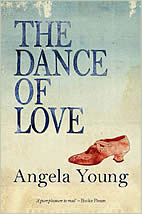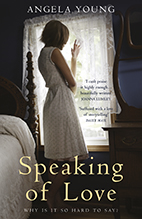In the 1940s, in America, Doctors Kenneth and Mamie Clark designed and conducted a series of tests known colloquially as The Doll Tests.
 Children between the ages of three and seven were asked to identify the race of the dolls and which colour they preferred.
Children between the ages of three and seven were asked to identify the race of the dolls and which colour they preferred.
A majority of the children preferred the white doll and assigned positive characteristics to it. The Clarks concluded that “prejudice, discrimination, and segregation” created a feeling of inferiority among African-American children and damaged their self-esteem.
I watched videos of the doll tests and found them entirely heartbreaking. When presented with black and white dolls and asked questions about them, almost all the children, black and white, identified the black dolls as bad, ugly and possessing other negative aspects. But even worse than that, when the children were asked which doll they looked like, Black children, who had almost all attributed negative qualities to the black dolls, pointed to the black dolls. In the original 1940s experiments the children were all black and when asked the final question, ‘Give me the doll that looks like you’:
Two children ran out of the testing room, uncontrollable, convulsed in tears.
 The dolls used in the Clarks’ studies at their Northside Center for Child Development, founded in 1946. (Credit: Collection of the Smithsonian National Museum of African American History & Culture, Gift of Kate Clark Harris in memory of her parents Kenneth and Mamie Clark, in cooperation with the Northside Center for Child Development.)
The dolls used in the Clarks’ studies at their Northside Center for Child Development, founded in 1946. (Credit: Collection of the Smithsonian National Museum of African American History & Culture, Gift of Kate Clark Harris in memory of her parents Kenneth and Mamie Clark, in cooperation with the Northside Center for Child Development.)
The experiment was :
used in the 1954 Brown v Board of Education Supreme Court Case that ended segregation … . The Supreme Court decided that separation and inequality went hand in hand and therefore it was unconstitutional … . The paper where the results are presented is called Racial Identification and Preference in Negro Children.
Today, integration is the law, segregation is against the law. But, in 2010, CNN commissioned a new version of the doll test, using cartoons that showed a range of skin tones. The results were similar to those shown by the Clarks in the 1940s. Sixty years later, the results were similar. In the new test, child development researcher Margaret Beale Spencer tested 133 children from schools with different racial and income mixes. This time, the studies looked at white children as well. And although Black children held more positive attitudes towards black dolls, white children maintained an intense bias toward whiteness. “We are still living in a society where dark things are devalued and white things are valued,” Spencer told CNN. Jim Crow segregation may no longer exist in the United States, but racial bias is alive and well. (adapted from an article by Erin Blakemore, August 2018.)
There is a small ray of hope. In 2017 a woman recreated the doll test with her six-year-old Black daughter. When asked if she knew what race she was, the child thought race was some kind of sport. When asked questions about the good and bad dolls she attributed positive qualities to the black doll, every time. But that’s only one test. It seems to me that we white people have many lessons to learn and much white supremacy to dismantle before we truly and always think of Black people as equals and so transmit these attitudes and values to our children and grandchildren. If we don’t, if we’re not, as Layla Saad says, good ancestors to our children and grandchildren, how will they ever imbibe antiracist, humane, heartfelt behaviour towards Black people?





Leave a Reply